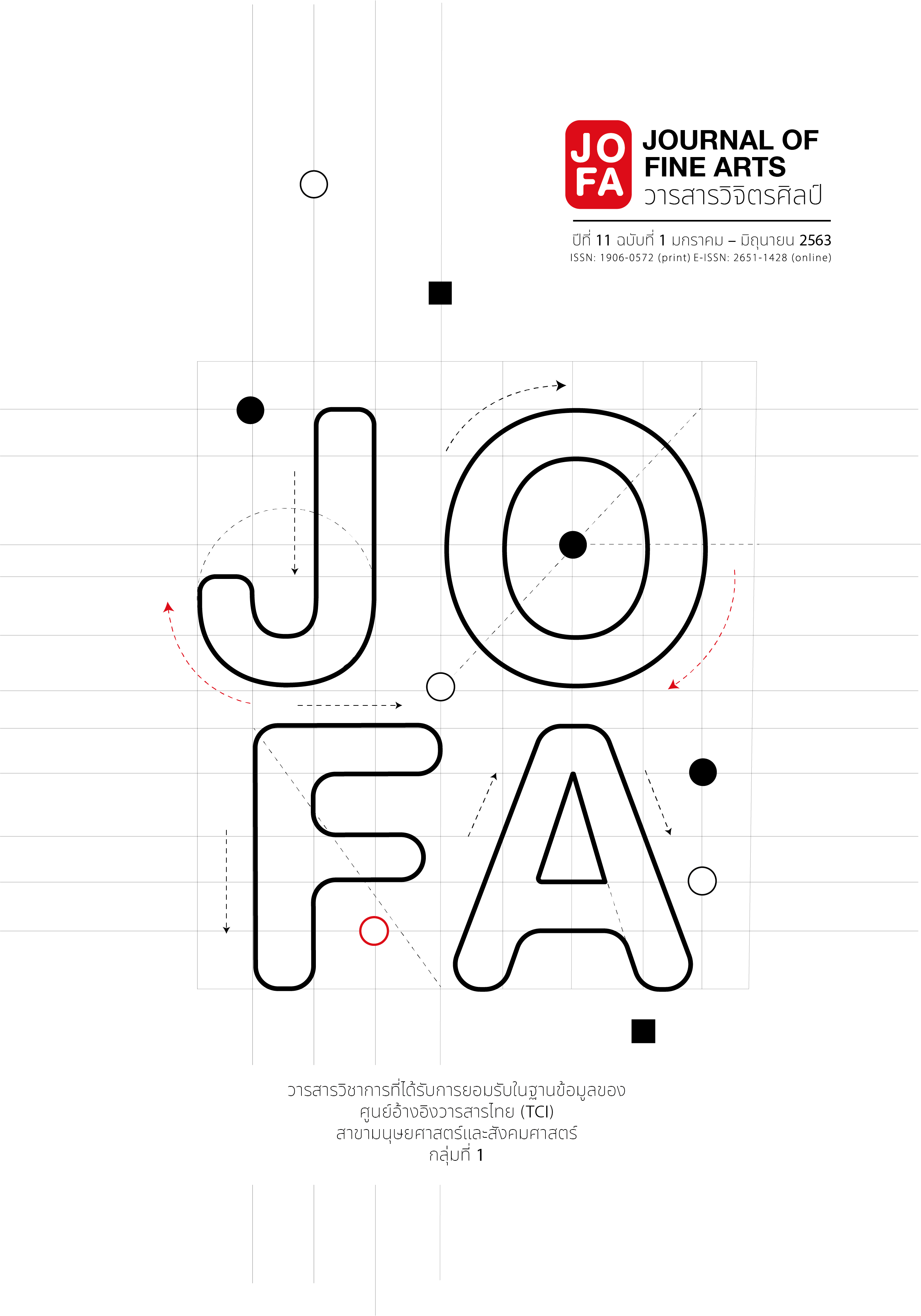Mae Ka Panoramic
Main Article Content
Abstract
The methodology of this research can be characterized as participatory-action within the local community. The purpose of this study is to (1) instrumentalize socially engaged art as a tool to connect with local culture and wisdom, aspiring towards community development. Cultural production will lead to identity formation and image improvement, making Maeka municipal district more attractive. We also aim to (2) explore the cultural and artistic characteristics of the community and develop a public relations strategy to promote tourism in Maeka municipal district and neighboring areas. We will begin by conducting field research - for example, interviewing people in the community, holding forums and seminars with locals, setting up a community art education center, exploring, taking photo and video documentation.
The scope of the study will be about the ways of living in the community according to local knowledge - this covers a range of topics such as food, plants, herbs, rituals, beliefs farming, folklore, and the history of the community. Each topic will be exhibited as exhibits and activities for those viewers who are interested and want to participate. The aim of these exhibitions is to present and publish the story of those people who are often overlooked. Additionally, it is important to document and archive this community knowledge that has never been recorded and likely to be lost. As a corollary, art exhibitions and the production of cultural activities often stimulate the local economy.
Lastly, although the data and results of this research may translate directly into commercial value, the cultural value at stake here is immense. This collecting of information in communities that have never been researched and exhibited before is important. The effect of realizing their own foundations, values in the arts, uniqueness of culture, and the identity of the community truly leads to communal strength.
Article Details
References
Chusongdach, R. “Ma čhak (khon la) fak fa khong phœng pha su kan thalai sen bæng khong withiwitthaya thang borannakhadi wali nai manutsayawitthaya læ maya nai sinlapakam [From (different) Horizons of Rockshelter: Breaking through the lines of archaeological methods, phases in anthropology, and myth in arts].” Research report, Thailand Science Research and Innovation, 2008.
Dewey John. Art as Experience. New York: Balch, 1934.
Freeland Cynthia. Art Theory a Very Short Introduction. Oxford, United Kingdoms: Oxford University Press, 2001.
Fūsǣng, B. Interview by Čhinnaphat Lao-trakūn, Mūbān Mō̜kǣngthō̜ng, April 4, 2017.
Inta, M. Interview by Phurinat Krachang, Ban Mo kæng thong, March 14, 2017.
Michael Lilak. Land Art. Bangkok: The Great Fine Arts, 2009.
Nakwatchara, C. Thangsaiklang hæng kan wičhan. [Middle way of critism]. Bangkok: Openbooks, 2012.
Ngœ̄nyen, S. Interview by Nitis Wanichaboon, Wat Mō̜ kǣng thō̜ng, March 25, 2017.
Rodbun, S. “sinlapa nǣo khō̜n sēp chūan [Conceptual Arts].” Art and Environment (6-28 Febuary, 1991) Bangkok: PSG Art Gallery by Faculty of Painting Sculpture and Graphic Arts, Silpakorn University, 1991.
Sērīwāt, T. Interview by Nitis Wanichaboon, Pha Yao University, April 14, 2017.
Thīanwihān, P. Interview by Adison Phi-son, Thēsabān Tambon Mǣkā, August 14, 2017.
Tom Standage. Prawatsāt Kin Dai [An Edible History of Humanity]. Translate by Tōmō̜n
Sukprīchā. Bangkok: Openworld, 2011.
Wongyānnāwā, T. Sinlapa kap saphāwa samai mai khwām yō̜n yǣng læ khwām laklan [Art and Modernity Paradox and Chaos]. Bangkok: Parbpim, 2009.


